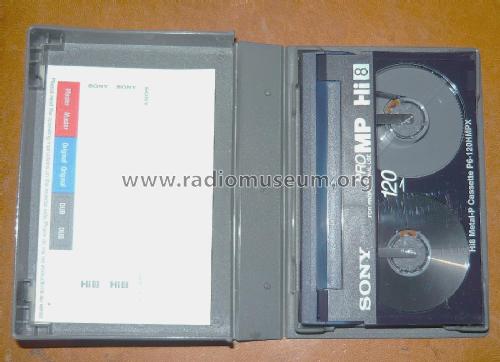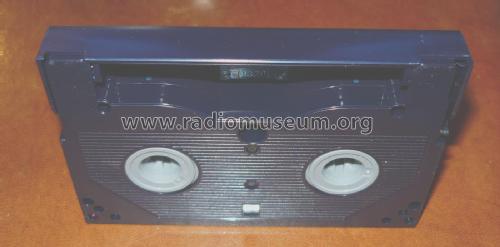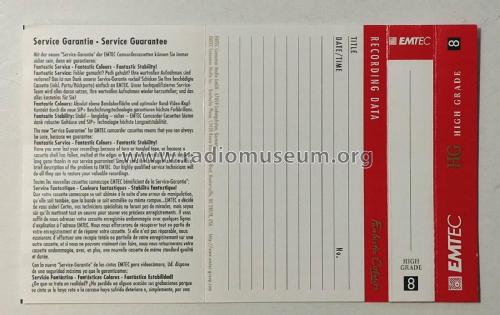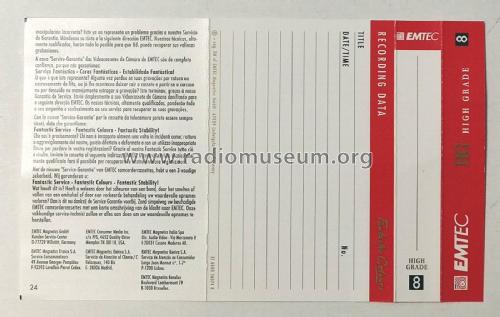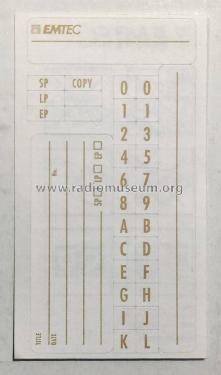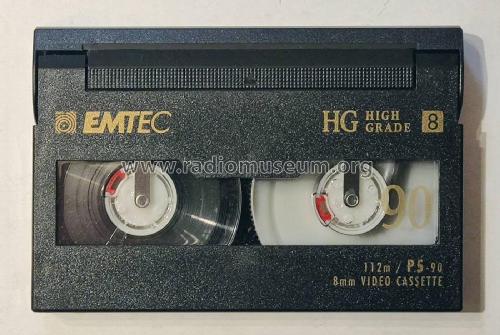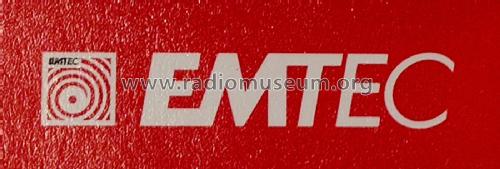Hi8 - 8mm Video Cassette All
Sony Corporation; Tokyo
- Pays
- Japon
- Fabricant / Marque
- Sony Corporation; Tokyo
- Année
- 1989 ??
- Catégorie
- Divers / autres - détails dans les remarques
- Radiomuseum.org ID
- 278814
- Gammes d'ondes
- - sans
- Particularités
- Magnétophone bandes / cassette format spécial
- Tension / type courant
- Pas d'alimentation nécessaire
- Matière
- Plastique moderne (pas de bakélite, ni de catalin)
- De Radiomuseum.org
- Modèle: Hi8 - 8mm Video Cassette [All] - Sony Corporation; Tokyo
- Forme
- Formes diverses décrites en notes
- Dimensions (LHP)
- 98 x 64 x 17 mm / 3.9 x 2.5 x 0.7 inch
- Remarques
-
This page is for all SONY labeled Hi 8 type Video Cassette tapes for all TV standards.
Please do not modify this page. You can specify additional data in the picture legend!
Bitte nur Bilder hochladen, alle Informationen/Daten in die Bildlegende.
History (taken from Wikipedia):
To counter the introduction of the Super-VHS format, Sony introduced Video Hi8 (short for high-band Video8). Like S-VHS, Hi8 used improved recorder electronics and media formulation to increase the recorded bandwidth of the luminance signal. Both Hi8 and S-VHS were officially rated at a luminance resolution of 400 lines, a vast improvement from their respective base formats and are roughly equal to laserdisc quality. Chroma resolution for both remain unchanged.
Both S-VHS and Hi8 retained the audio recording systems of their base formats; VHS HiFi Stereo outperformed Video8/Hi8 AFM, but remained restricted to high-end machines. In the late 1980s, digital (PCM) audio was introduced into some higher grade models of Hi8 (but never S-VHS) recorders. Hi8 PCM audio operated at a sampling rate of 32 kHz with 8-bit samples—higher fidelity than the monaural linear dubbing offered by VHS/S-VHS, but vastly inferior to VHS HiFi. PCM-capable Hi8 recorders could simultaneously record PCM stereo in addition to the legacy (analog AFM) stereo audio tracks.
The final upgrade to the Video8 format came in 1998, when Sony introduced XR capability (extended resolution). Video8-XR and Hi8-XR offered a modest 10% improvement in luminance detail. XR equipment replays non-XR recordings well, and XR recordings are fully playable on non-XR equipment, though without the benefits of XR.
All Hi8 equipment can record and play in the legacy Video8 format. The reverse was not usually the case though there were a few late entry Video8 systems that would recognize and play Hi8 recordings.
- Poids net
- 0.085 kg / 0 lb 3 oz (0.187 lb)
- Auteur
- Modèle crée par Edoardo Sigismondo. Voir les propositions de modification pour les contributeurs supplémentaires.
- D'autres Modèles
-
Vous pourrez trouver sous ce lien 4068 modèles d'appareils, 3925 avec des images et 975 avec des schémas.
Tous les appareils de Sony Corporation; Tokyo
Collections
Le modèle Hi8 - 8mm Video Cassette fait partie des collections des membres suivants.
